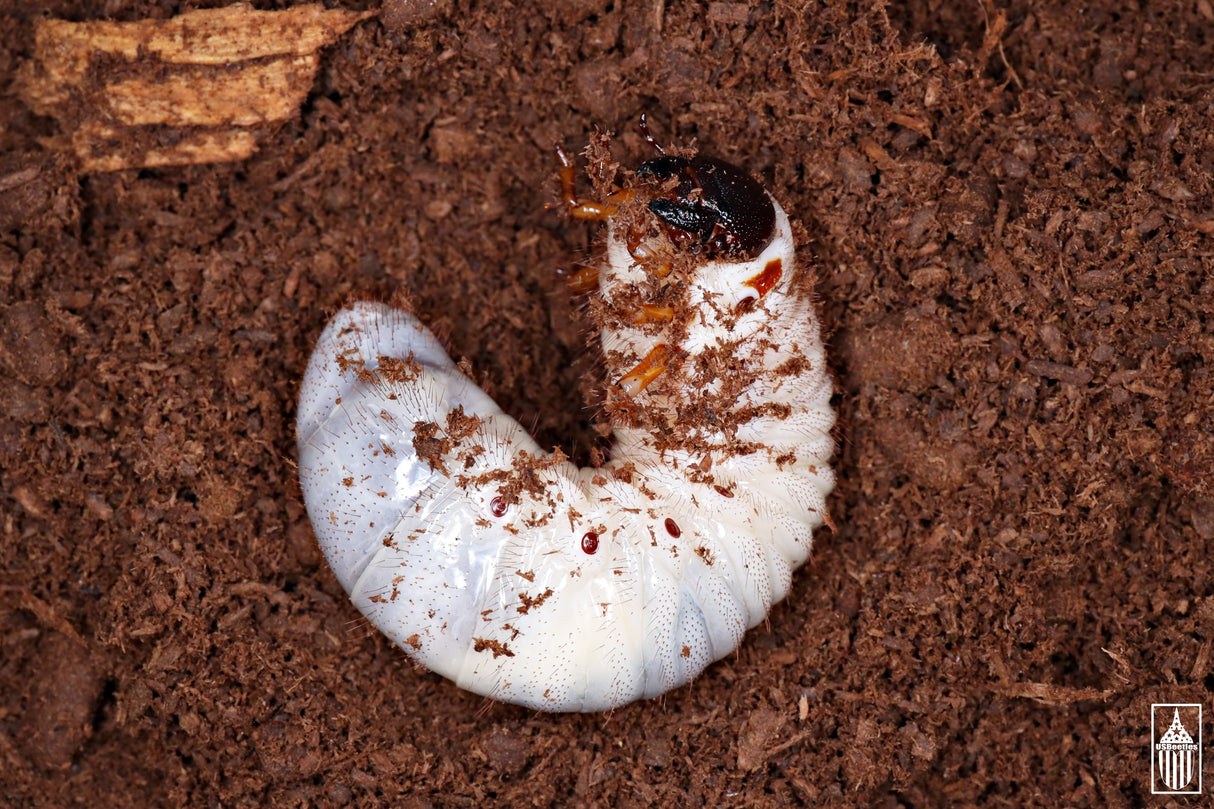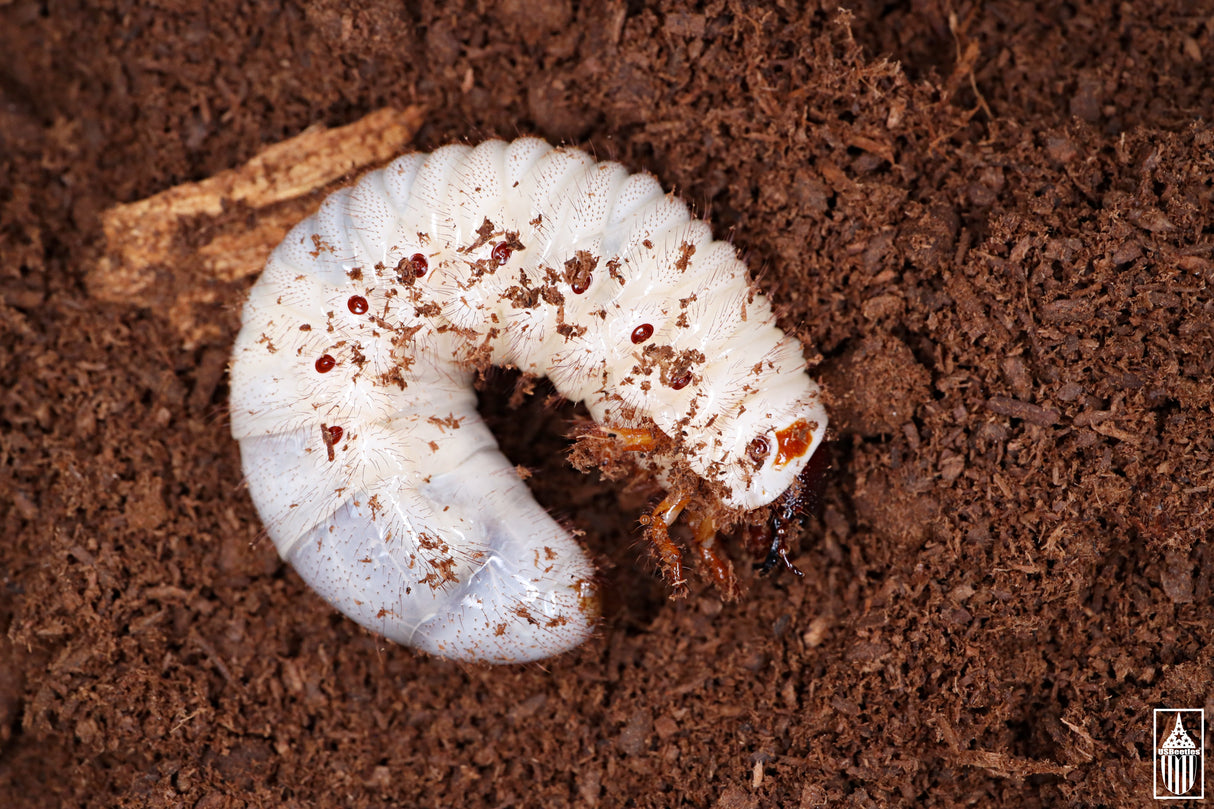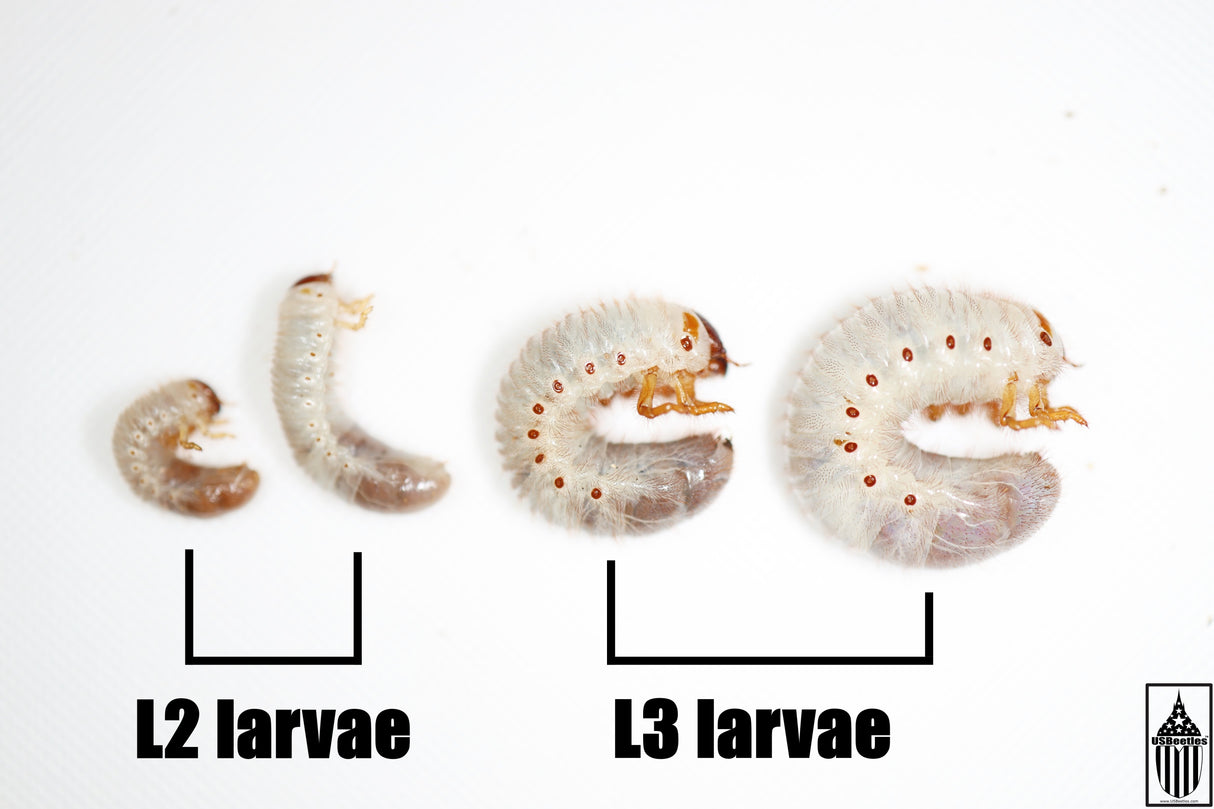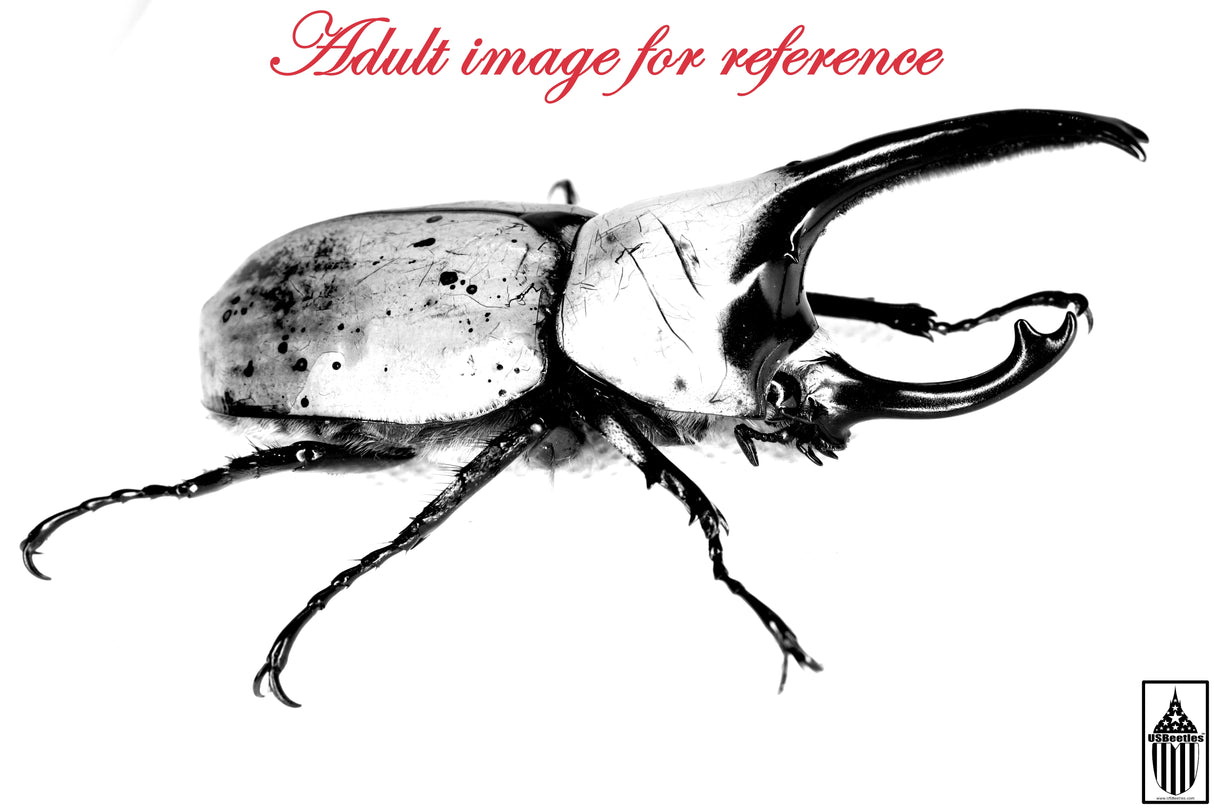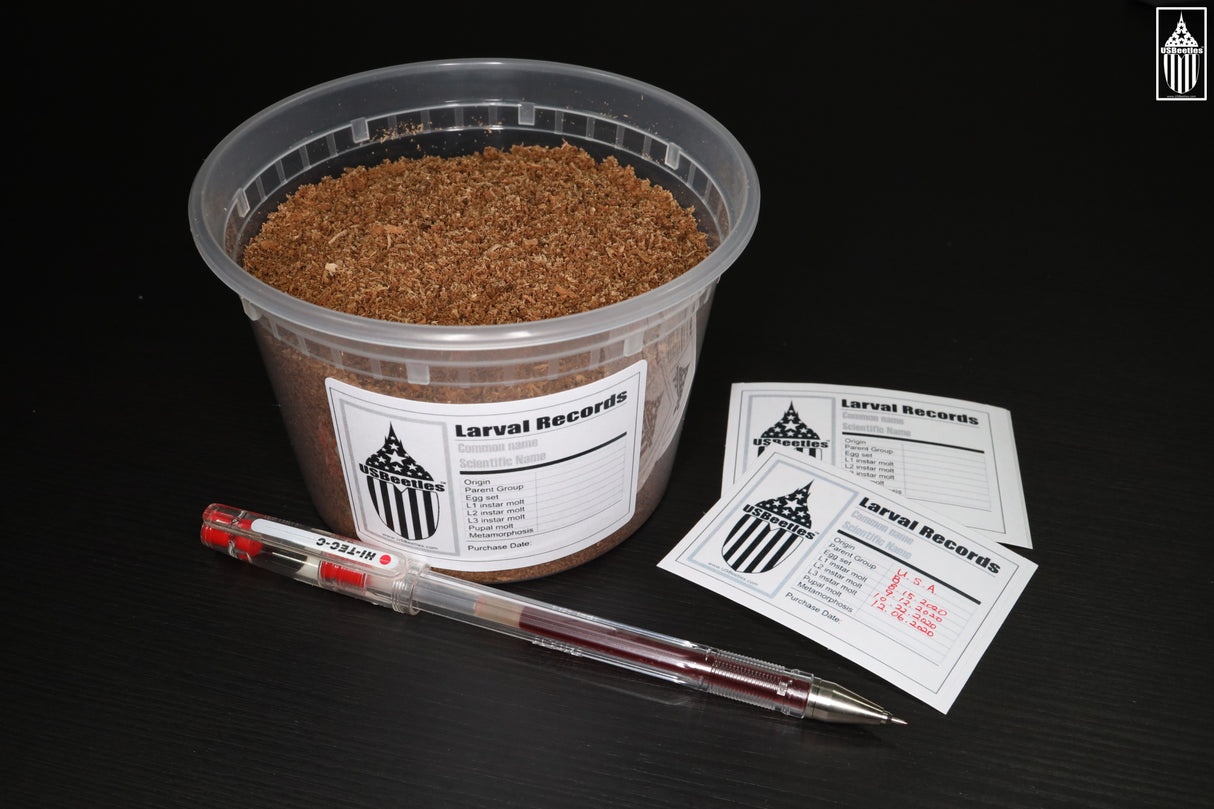Western Hercules Beetle (Dynastes grantii) larva.
Western Hercules Beetle (Dynastes grantii) larva. - L3 larva is backordered and will ship as soon as it is back in stock.
Couldn't load pickup availability
Care information
Care information
Please receive and take the package into the cool area as soon as it is delivered. Keeping the package under the direct sunlight can lead to fatal circumstances to live insects.
Delivery and Shipping
Delivery and Shipping
Live insects are shipped only from Monday to Thursday in order to prevent the package held during transportation over the weekends. Please refer to Shipping policy and Refund policy since the shipping carrier is accountable for the delay, lost and damage on the package once it's dropped at their stores.
Description
Description
Western Hercules Beetle (Dynastes granti) larva. Comes in 16 oz container filled with substrate.⠀⠀
Egg -> L1 Stage Larva -> L2 Stage Larva -> L3 Stage Larva -> Pupa -> Adults
⠀⠀⠀
1. Whole process once it is hatched from egg usually takes about 15 months and span of L3 is the longest among all 3 larval stages. Age of mature L2 larva might be 3~4 month old and need to be bred for another 7~11 months to become pupa.
⠀⠀⠀
2. Substrate is consist of Hard wood, protein and etc. and provides essential ingredients for metamorphosis. 16 oz. that it come with larva kit would last about 1~2 month for L2 larva until you found lots of frass on the surface. L3 larva needs to be moved to at least quart size container and replaced with new substrate once in about 2~4 months depending on the growth of it.
⠀⠀⠀
3. Adult can be fed both with Beetle jelly or fruits but preferred to be provided with jelly due to mites.
Unlike beetles, larvae requires consistent environment for their steady growth. For all species that we deliver, they normally stay at the same spot until they become adults in nature. Presumably they are apt to consistent oxygen & moisture level, temperature and head pressure if they are burrowed in the source of their growth. Sounds dumb but all they do for whole day is chew and release.
What we need to take into consideration is whether the container that we are about to use complies to above conditions or not. Remind container that you selected for the Beetles worked well or not if you had them before. Same thing applies here, we need to think on the other side and understand which container to choose.
There are 3 types of containers commonly used for breeding larvae.
1. Rectangular shape household food containers made with PET materials comes at reasonable prices and handy when you have multiple numbers of larvae in the limited space, it is also easier to stack them together and move around as well.
2. The other type is the cylindrical plastic containers that are frequently used as To-Go Containers for liquid food such as soups. We recommend you to use 16oz for L1 and L2 but later transfer to 32oz when it turns to L3. 16oz plastic containers might be sufficient for the larvae of the smaller beetles but frequent monitoring is required since it will soon become full of frass before you know it.
3. The one that we mostly use is quart size glass jars (equivalent to 32oz). We consider it works the best for us because it is easier to monitor the condition of Flake Soil through the glass and the development of the larvae without actually taking it out to examine. Most importantly, we don't want to break the Pupal chamber which will cause irreversible affect to the larvae. But it is hard to handle, takes up lots of space and expensive to buy, too.
Going back to the factors what larvae need as the best environment for their development, discretion is on you what to choose taking the chances of your own. Consider that as a part of interesting experiment that you can record to see how it affects under different conditions.
Another thing to consider for L3 larvae is that some species makes vertical Pupal chamber while some makes horizontal chamber (Some seems don't even care). It is the natural trait per the species and you need to think thoroughly if you want to meet the perfect adults after months of your valuable time and money.
We can't talk about larvae without thinking about Molting and Metamorphosis. Molting is the process of getting rid of the old skin and exposing new skin to enable larvae to grow. We call each phase of the larvae as L1, L2 and L3 instars and Molting separates their phases. L indicates Larva and the number following it means which phase it is in.
For larvae of the most Beetles, skin has two major parts such as hard cap on the head and soft skin on the rest of the body. Larva continuously grow its body until the point the head needs to become larger. Molting starts from the head and to the body peeling the old skin as if undressing cloths. It is white when new skin is disclosed and slowly finds its natural color as it hardens. We must not disturb larvae at this point. Thus, larvae of the Beetle requires 3 times of the Molting processes (excluding hatching from an egg) i.e. L1 to L2, L2 to L3 and L3 to Pupa.
Despite Molting process in L1 to L3 metaphorized as undressing, Molting for a Pupa is much more complex which requires a lot of changes to larvae even before it starts. Major changes of larvae prior to Pupa are as the followings taking for about 3 weeks.
- Larva constructs Pupal chamber and contains itself within it.
- Frass and liquid of the larvae is slowly emitted. Thus, size of the larvae shrink significantly and color of them darken noticeably.
- Legs shrink and paralyzed losing its function. Blood and air veins elongate and become ready to be detached.
- Repetitive motion of folding its body in order to expand and harden inner space of the chamber enough for both Pupal Molting and Metamorphosis to adult.
Molting starts from back of the head and unveils completely different shape to what we call Pupa. Most of the organs from the larvae still need be functional for adult, (although some such as reproductive organ newly developed) every veins and nerve system connected to old skin should be detached during this process. Statistically, large percentage of larvae do not make it through. Some comes out as deformed still alive but eventually die before the Metamorphosis.
If the Pupa had not been disturbed for about a month (It depends on species), Metamorphosis begins but Pupa also needs to go through lots of changes as the followings that we can see through its thin layer of skin.
- Fully inflates usually within a week and repetitive movement of twisting starts.
- Starting to show exoskeleton of adult after few weeks but it is still filled with some sort of liquid.
- If the slight movement on its claws was observed, then it is the sign that the Metamorphosis will begin in a day or two.
It is imperative that the new young adult beetle to have the perfect chamber that the larva made for a long time which is designed to maintain proper moisture level and hard walls to support its legs to expand and dry Elytra and Hind wings that must not touch the surface of the wall or the floor. The Beetle should be able to freely change positions or orientations itself in order to have sufficient blood flow into all parts of the body.
Major cause of deformity on adult beetles during Metamorphosis is directly related to the improper or without the Pupal Chamber that observers frequently break for closer look which is life threatening exercise for the Beetles. Even though we are curious to see how this process evolves, we should leave them in the chamber that it has built for itself betting for the life.
*Register our community forum and have access to Breeding Guides
Payment & Security
Payment methods
Your payment information is processed securely. We do not store credit card details nor have access to your credit card information.

